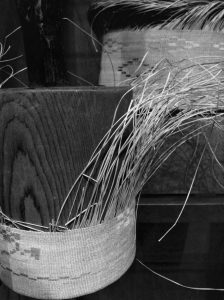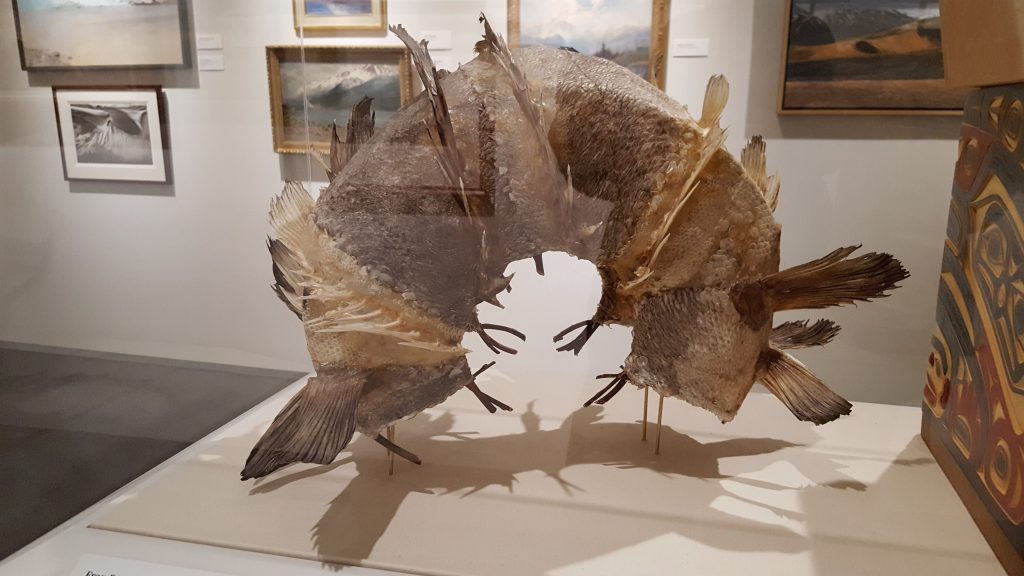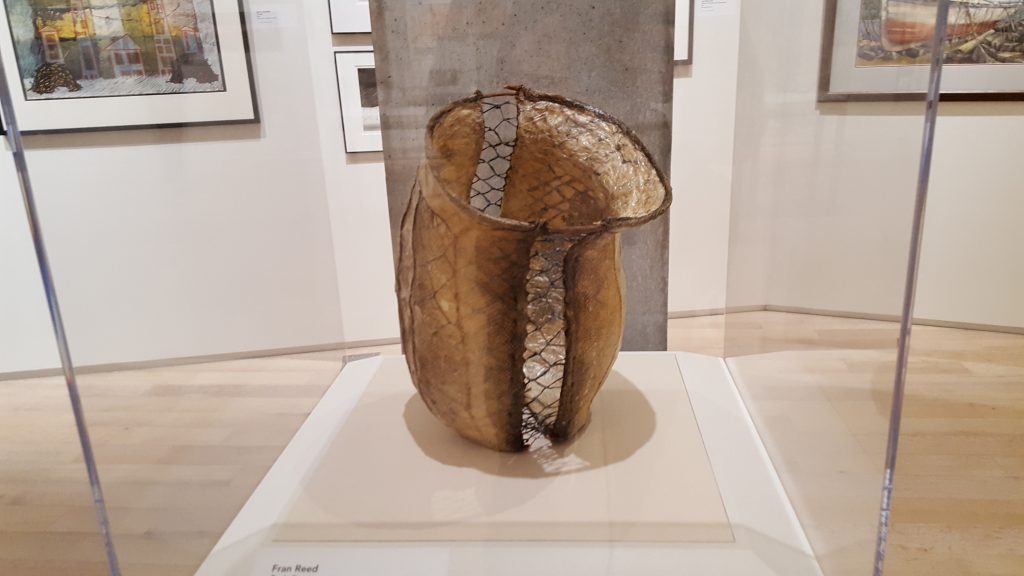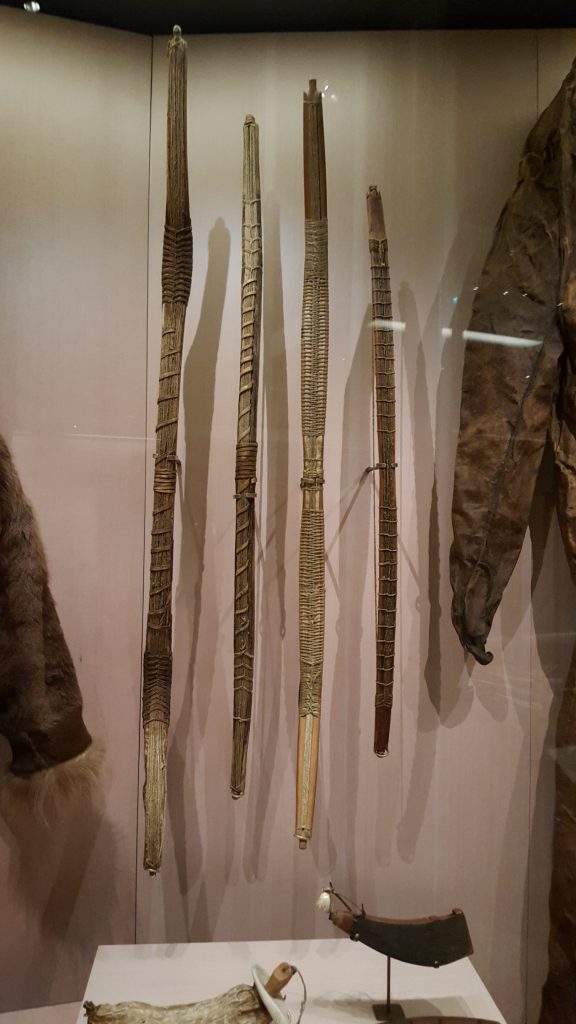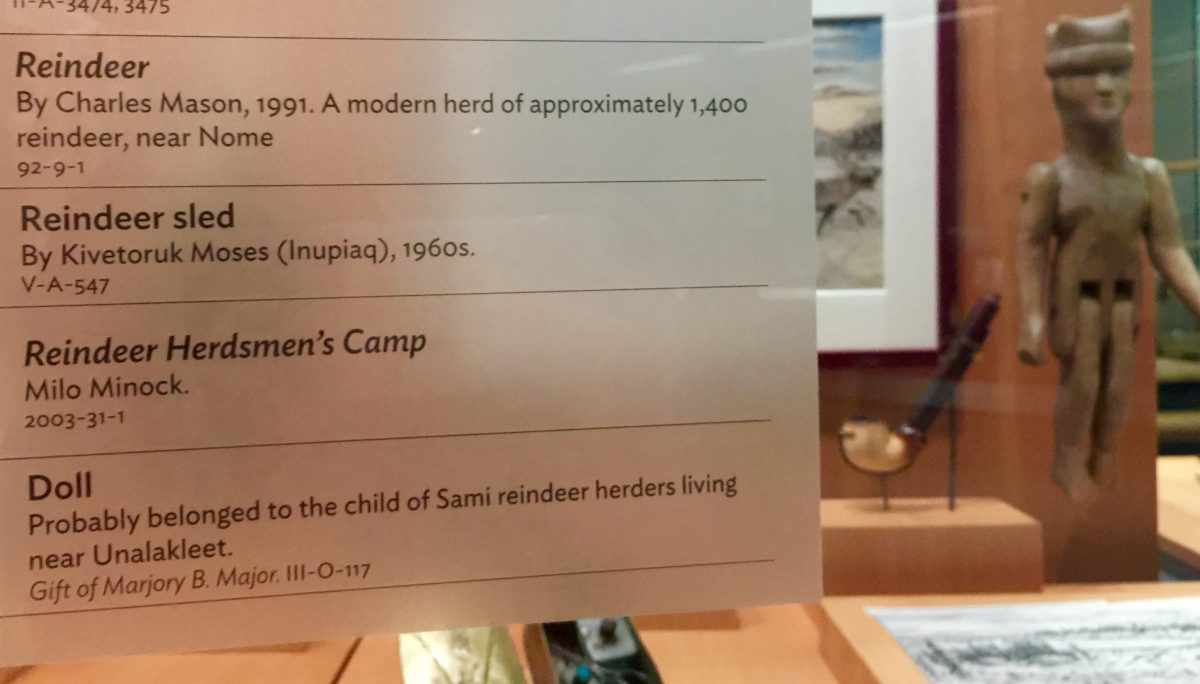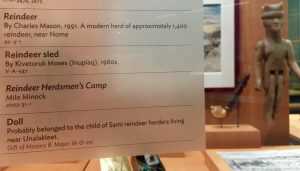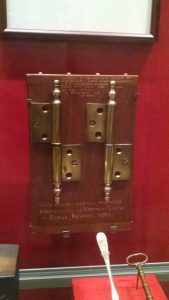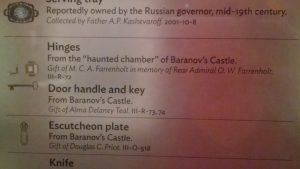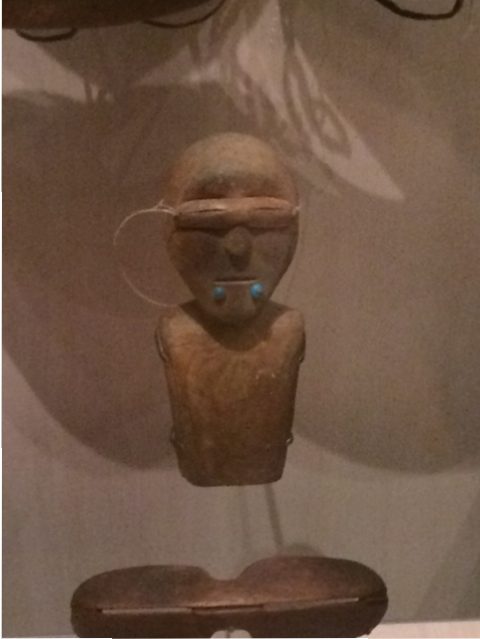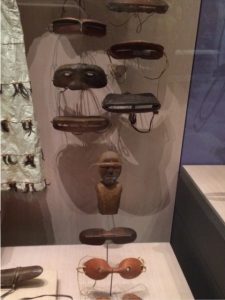An Artifact: chivtux “grass basket”
“The grass proved difficult to work with, but the weavers persisted” (1).
chivtux “grass basket”
Language: Unangam Tunuu (Attuan dialect)
Courtesy of: Alaska State Museum – Juneau
I cannot peel my eyes away from the Aluet Basketry collection at the Alaska State Museum. One basket that particularly stands out is a hand woven grass basket in the Attu style. There are three distinct types of Aleut Basketry that come from Atka Island, Unalaska Island and Attu Island.
The basket that catches my eye is not finished; strands of the most delicate grass splay in all directions and I cannot stop thinking about the woman who took the time to weave 1050 stitches per square inch. Each blade of grass for this basket was gathered in the summer on coastal hillsides; not too close to the the ocean or it would be too coarse and not too far away or the grass would be too brittle. The weaver then bundles, ages, and sorts each individual strand, before drying and splitting every blade of grass with a fingernail or needle. Before weaving, the grasses are often coloured with berries, tea, clay, coffee, and even onion skins for yellow (2).

As shown in the picture from the Alaska State Library Archives, Attu baskets are held upside down during the weaving process. The weaving is done from left to right while the basket is rotated clockwise.
Attu weavers maintain a strong tension with each strand of grass to create a finer weave than other Aleut styles. In fact many Attu baskets are so tightly woven that they are able to carry water. I am drawn to so much more than just the dexterity of the stitches, and the detail of the patterns. These baskets are representative of the spirituality, and the interwoven history. They exist, like all the art I see in the Alaska State Museum, because of the artists’ perseverance.
They persisted in the 1800s when Russians entered the Aleutians with force and brutality. They persisted in the 1900s when they watched the U.S. military burn their entire village to the ground, including the cured grass that the women had prepared all summer. During WW II Attuans were forcefully relocated to an abandoned herring factory, with poor water supply, little housing and no access to subsistence hunting and fishing. Within days of arrival these determined artists began collecting grass, similar to the grass that grew in on Attu Island, and they began weaving.

Weaving is a deeply embedded part of life for the Attuan people. Babies sleep in woven cradles, and warriors wore woven belts that offered protection. Women wove clothing, mats, bedding and even sheets to separate rooms in their homes. Even the sun sleeps on a grass mat, while the moon (an important uncle) travels across the night sky.
Sources:
